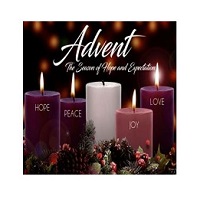
Advent 2022
Advent 2022
We begin another Liturgical Year this weekend. The Latin word, adventus, means “coming”, so the season is mainly a season of Expectation. Still, it is also a season that ends in Joy.
Early Origin
The earliest origins of this season come from Spain, and Lower France, called Gaul. In 380, the Council of Saragossa reminded people of the obligation to attend Mass each day from December 17th to January 6th. Hillary of Poitiers (+367) speaks of the Gallian practice of a three-week preparation for the Epiphany on January 6th. Later, in fifth-century Gaul, a three-day-a-week fast began on November 11th, St Martin’s Day, until December 25th.
The historical evidence points to a practice of baptisms on the Feast of Epiphany and later at Christmas. It also suggests the priority of the Feast of Epiphany over December 25th. Scholars also suggest that the advent period may take its origins from the pagan Saturnalia festivals for which it was a “pre-festival”.
The Gallian usage may have derived from Celtic monastic practices. We know some practices and the requirements from the Synod of Tours (France) in 567 and from a council held at Macon in 581. They both describe fasts for monks and laity. It was in Gaul that the Advent time and fast took on a penitential character.
Roman Use
In fourth-century Rome, there was a pre-Christmas period—though not necessarily related to the 25th of December.
The creator of the Roman Advent practice was Pope Gregory the Great (+604). He fixed the season at four weeks, composed prayers and antiphons and arranged the Mass and Office. Ember Day texts were added later in the seventh century.
The ‘O’ Antiphons are central elements from December 17th onwards. They mark the shift in the emphasis of Advent from waiting to Joy. The Third Candle (usually pink) on the Advent Wreath indicates the change in emphasis and direction toward Christmas and Epiphany.
In the ninth century, the Roman Liturgy was exported to Gaul. There it was influenced by the local Gallic practices. It took on the penitential flavour and developed an eschatological or End Times perspective as the Gallian and Roman liturgies fused.
The Roman-Gallian liturgical rites that “returned” to Rome in the twelfth century are the basis for the season and its themes or flavours that we celebrate today.
Today
The General Norms for the Liturgical Year and Calendar preserve the two-fold focus for Advent: the first two Sundays highlight Christ’s second coming; the last two highlight the Incarnation, and the Fourth Sunday includes references to Mary of Nazareth.
The use of the wreath, the green foliage and the candles are nineteenth-century German additions. They symbolise light and life in the darkness of a northern winter.
Here the garden’s blooming, the trees and longer evenings are our symbols.


